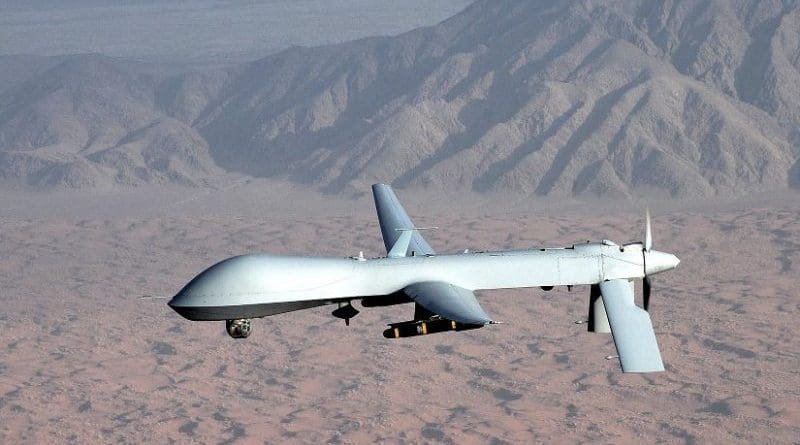Air Force launches second unmanned spacecraft
By DoD News
In the latest step to improve space capability and further develop an affordable, reusable space vehicle, Air Force technicians launched the second X-37B here March 5, officials said.
The Orbital Test Vehicle-2 launch comes on the heels of the successful flight of OTV-1, which made an autonomous landing at Vandenberg Air Force Base, Calif., Dec. 3 after 224 days in space.
According to officials, post-flight analysis of OTV-1 revealed OTV-2 needed no significant changes, but detailed assessments of the first mission are ongoing.
“Launch is a very demanding business and having what appears to be a successful launch is always welcome news,” said Deputy Under Secretary of the Air Force for Space Programs Richard McKinney, adding he is pleased with the vehicle’s initial status reports. “It is important to remember that this is an experimental vehicle; that this is just the second launch; and that we have just started what is a very systematic checkout of the system.”
Mr. McKinney explained the second X-37B flight will help Air Force scientists better evaluate and understand the vehicle’s performance characteristics and expand upon the tests from OTV-1.
One performance test, for example, will evaluate a change following the flight of OTV-1, which showed potential for greater flexibility in the landing parameters.
“We look forward to testing enhancements to the landing profile,” said Lt. Col. Troy Giese, X-37B program manager for the Air Force Rapid Capabilities Office, which leads the Department of Defense OTV program.
Colonel Giese added that program officials want to test landing capabilities in stronger wind conditions.
“The X-37B really is a remarkable scientific and aerospace achievement,” he said. “We’ll also be looking at the performance of its advanced thermal protection systems and tiles, solar power systems and environmental modeling – all important system capabilities for a space vehicle that we want to be able to bring back and then re-launch quickly.”
Power and environmental protections are also important to one of the most promising capabilities of the vehicle: its orbit duration, which is much longer than a manned mission like NASA’s space shuttle, Colonel Giese said.
Similar to OTV-1, OTV-2’s actual mission duration will depend on the vehicle achieving its test objectives, but he expects it to remain on orbit for approximately 270 days.
“We may extend the mission to enhance our understanding of the OTV capabilities,” Colonel Giese said, “especially since the performance data from the first flight suggest that the vehicle could have gone beyond the 270-day requirement.”
Air Force officials assert the X-37B program has the potential to make space experiments more affordable, which would allow future experiment designers to focus resources and dollars on technology and innovation rather than on basic services, layers of redundancy, or ground operations.
“This program provides a test capability that was difficult to achieve through other means, the ability to examine how highly complex technologies will perform in space before they are made operational,” Mr. McKinney said, “But right now our focus is on the X-37B itself, and this second flight is important to our further understanding of its capabilities.”
Air Force officials anticipate multiple missions will be required to satisfy the X-37B program test objectives, but a third mission has not yet been scheduled.
The OTV is the United States’ newest and most advanced re-entry spacecraft and is the first vehicle since NASA’s Shuttle Orbiter with the ability to return experiments to Earth for further inspection and analysis.
(Eric Brian contributed to this story)

